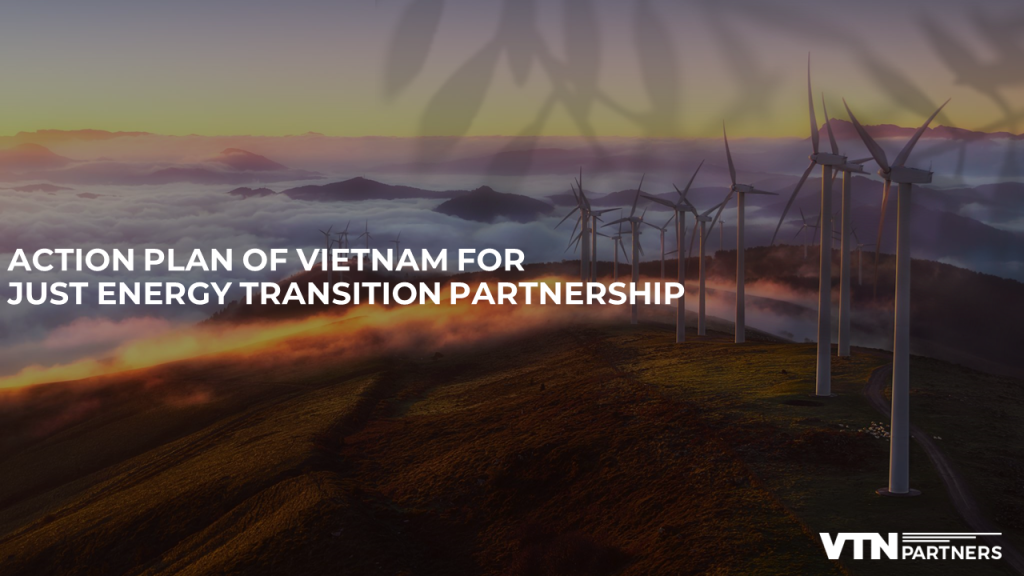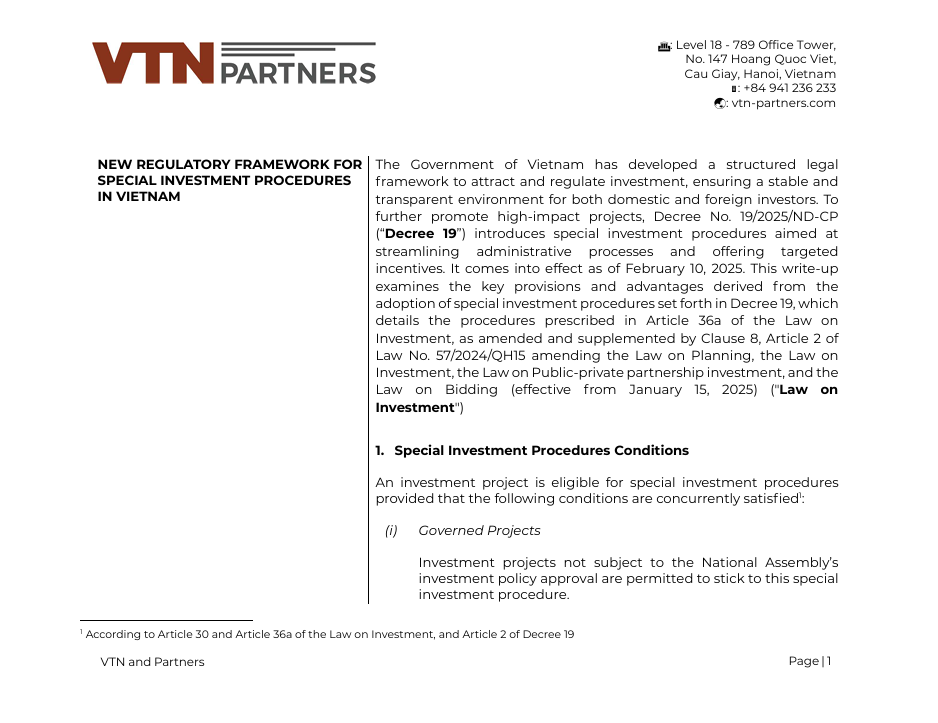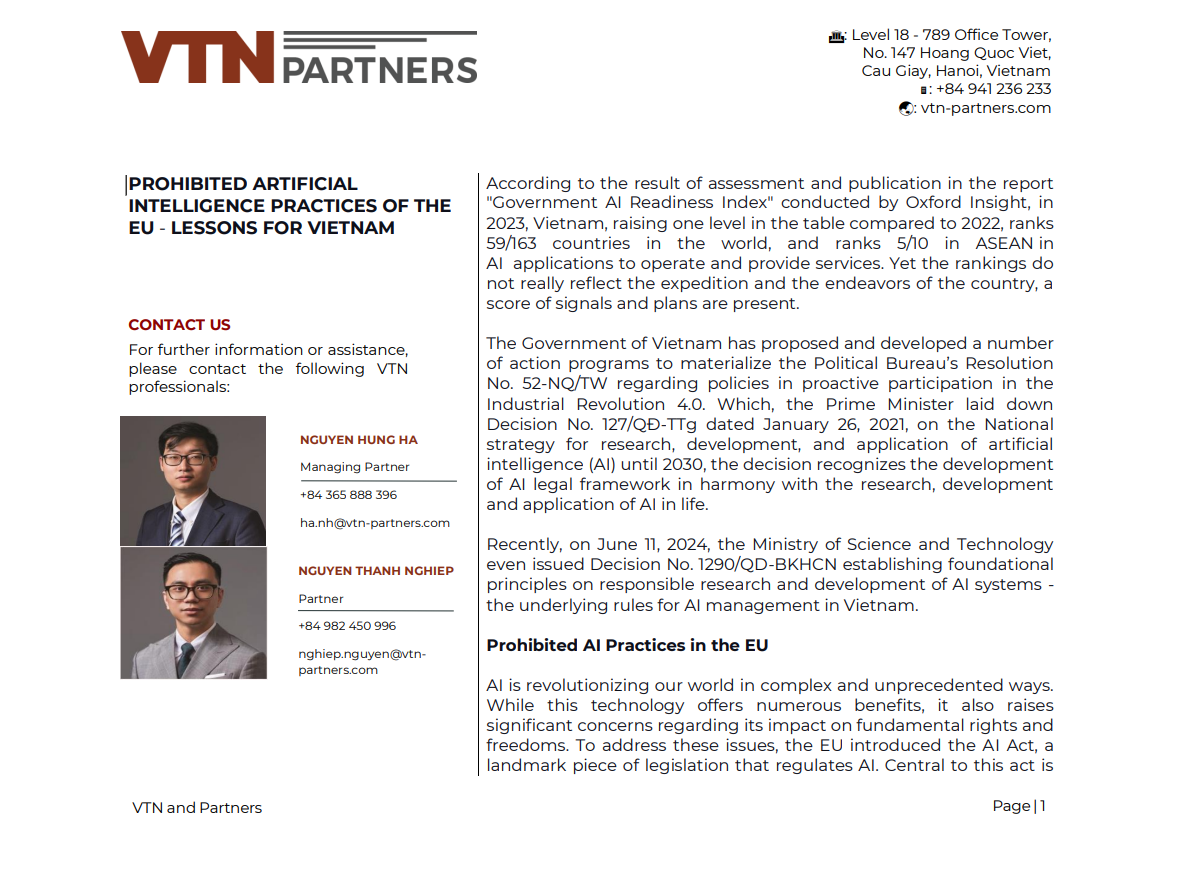This article is written by Nguyen Kien Cuong and edited by Nguyen Thanh Nghiep
Decision No. 1009/QD-TTg on Approving the Action Plan for the Implementation of the Political Declaration on Establishing the Just Energy Transition Partnership (“JETP Declaration”) was promulgated and came into force as from August 31st, 2023 (“Decision 1009” or “JETP Action Plan”). Decision 1009 sets out core goals of promoting renewable energy development, energy saving, and energy efficiency, contributing to the goal of net zero emissions by 2050, developing the energy industry in harmony between sub-sectors with synchronous and intelligent infrastructure based on ensuring national energy security and development goals and ensuring equity in energy transition.
In this note, we would like to elucidate the noteworthy points of Decision 1009 in the greener pathway of Vietnam.
The primary goals under the JETP Action Plan are grouped into 2 phases underpinning 2030 as the critical year in the carbon neutrality voyage.
By 2030, Vietnam endeavors to establish two inter-regional renewable energy industrial and service centers in potential areas such as the Northern, South Central, and Southern regions, with a renewable energy rate of 47% and a peak emission of the power sector not exceeding 170 million tons of CO2 equivalent; a total scale of coal-fired thermal power capacity of not more than 30,127 MW with full and substantive international support; and implementing the National Power Development Plan for the period 2021–2030 with a vision to 2050.
After 2030, this JETP Action Plan aims to reach energy sector greenhouse gas emissions not exceeding 101 million tons of CO2 equivalent; the ratio of renewable energy is about 80–85% of the total primary energy resources; enterprises reduce greenhouse gas emissions in line with the roadmap to achieve the net zero target and implement the Nationally Determined Contributions (NDC).
In order to accomplish the primary goals, the below action plan with specific missions lined up must be executed in a highly focused manner and in strict compliance with local laws and international commitments.
First, the vital act of completing the JETP Action Plan is to perfect institutions and policies to promote the energy transition.
Second, coal-fired power plants with more than 30 years of age that are unfeasible to convert to other suitable uses will be reviewed and stopped. The projects that are being developed but behind schedule, facing difficulties in changing shareholders, and arranging funds, or do not meet environmental standards shall be closed.
Relevant authorities will negotiate to stop the development of or carry out the transition to other energy resources by Cong Thanh, Nam Dinh I, Vinh Tan III, and Song Hau II coal-fired power projects listed in the National Power Plan VII.
Third, Vietnam will start researching and developing the industrial and service ecosystem on renewable energy. Renewable power, new energy, biomass, waste-to-power, and rooftop solar power on office buildings and resident housing projects will be carried through.
Fourth, energy saving and efficiency is promoted. The energy-saving service company business model (ESCO) will be implemented.
Fifth, the JETP Action Plan is implemented by upgrading power transmission and distribution systems, accelerating the roadmap for building smart grids, and developing energy storage systems. Also, Vietnam targets to link intra-region electricity grids amongst neighboring countries.
Developing Bac Ai, Phuoc Hoa, Dong Phu Yen, Don Duong, and other feasible pumped storage hydropower projects and investing in energy storage batteries are added alongside other missions.
Sixth, the green energy transition and greenhouse gas emission reduction in the transport sector must be carried on. In particular, the Action Plan on green energy transition, carbon dioxide, and methane emission reduction in the transport sector will be performed.
Developing electric vehicle charging network infrastructure and transferring to the use of electric vehicles in the common transportation system will also be lined up in the period of 2024 to 2029.
Seventh, another central task is technology transfer. The International Center for Renewable Energy will be opened in Vietnam. In the meantime, the Government will promulgate and supplement (i) the national criteria, standards, and technical regulations for identifying clean technologies and green transformation projects and (ii) the national standards and regulations in the field of recycling and waste utilization from energy production.
Eighth, the just energy transition must be ensured by Implementing the “Small Scale Power Grid Development Fund” mechanism and the Program for Assistance in Development of the Labor Market by 2030 and the Strategy for Development of Vocational Education during the 2021–2030 period. Furthermore, businesses implementing energy transition projects can have direct access to financial resources from the International Partnership Group (IPG) and the Glasgow Financial Alliance for Net Zero (GFANZ) (an initial US$15.5 billion in the next three to five years).
Last but not least, the JETP Action Plan is provided, likewise, to communicate and raise awareness. From there, it will bring about the promotion of international cooperation on the just energy transition by attracting international resources and exchanging experiences and models of just transition in countries.
Prioritized Project Groups under the JETP Action Plan
There will be three project groups got on line and feasible for support and funding from JETP funding under the JETP Action Plan.
Grid Development
Private capital will be mobilized in the grid development, including identifying the scope, priority, and investment program by the private sector; laying down the legal framework; and promoting the cross-border and offshore transmission line.
EVN will be supported to improve the transmission infrastructure, and more transmission lines and transformation stations will be constructed for offshore wind power.
JETP funding for this group of projects will be financed by IPG members, development partners, and commercial banks of Vietnam.
Storage Batteries and Pumped Storage Hydropower
The commitment to advancing energy storage systems (ESS) in line with the objectives of Electricity Planning VIII encompasses several key initiatives. Firstly, the Government aims to enhance the knowledge and capabilities of civil servants and technicians in handling connection requests related to ESS. Vietnam is dedicated to crafting a comprehensive policy framework that addresses the incorporation of ESS within the electricity industry’s ancillary services regulations. Furthermore, they plan to conduct a thorough assessment of the necessity for Battery Energy Storage Systems (BESS) and other storage units, providing support for feasibility studies.
In terms of investments, Vietnam is actively engaged in multiple endeavors. A pilot project involving a 50MW/50MWh BESS by EVN will be initiated with a focus on gaining insights into ancillary services while also establishing pricing mechanisms and technical standards. Vietnam plans to implement two additional pilot projects: one integrating a 7MW/7MWh BESS into a 50MW solar power farm and another integrating a 105MW/105MWh BESS into a 400MW solar power farm.
Lastly, the Government is diligently progressing with the completion of the Bac Ai 1,200MW pumped storage hydropower plant, which includes the development of the upper reservoir and the construction of an extensive 500KV transmission line spanning 18.8 kilometers.
Similar to the grid development, JETP funding for this group of projects will be financed by IPG members, development partners, and commercial banks of Vietnam.
Offshore Wind Power Development
The Government of Vietnam is actively supporting the advancement of offshore wind power development through a comprehensive strategy. The efforts include the development of technical capacity and the construction of policies related to marine spatial planning and offshore wind power. Additionally, Vietnam is providing funding to reduce initial project costs for the first offshore wind ventures, covering expenses like wind speed measurements and geophysical surveys, all with the aim of facilitating the installation of 2 GW of capacity. To ensure the sustainability and efficiency of offshore wind power, the Government is also allocating funds for continuous data collection on wind speed and environmental conditions in areas with significant potential. This data is pivotal for informed planning, investment, and the effective operation of wind power plants and associated electricity grids. Moreover, the Government is actively engaged in surveying and shaping the landscape of offshore wind power planning.
Regarding investments, the Government of Vietnam has set ambitious targets, aiming to invest in offshore wind power projects with the objective of achieving an installed capacity of up to 6 GW, fully integrated into the electricity grid by the year 2030. This strategic investment underscores their commitment to making a substantial contribution to the growth and integration of offshore wind power within the country’s energy sector.
The funding will be sponsored by IPG members, development partners, and commercial banks of Vietnam.








